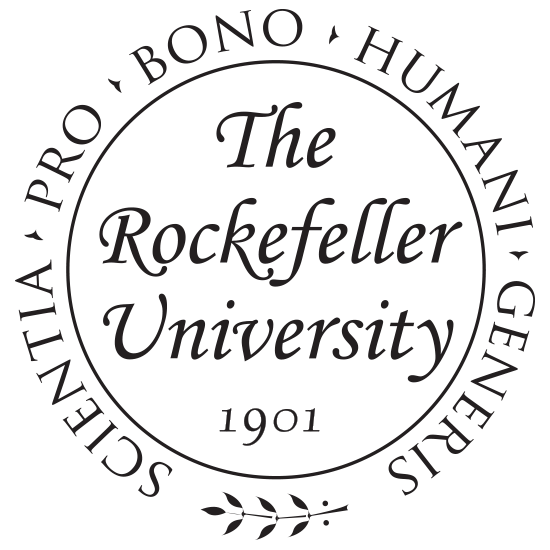Science
Researchers Unveil Revolutionary Model of Nuclear Pore Complexes

Nuclear pore complexes (NPCs) have long fascinated scientists due to their crucial role in regulating the flow of materials between a cell’s nucleus and its cytoplasm. A new study from researchers at The Rockefeller University in collaboration with an international team led by the Hebrew University of Jerusalem has revealed an integrated experimental and computational model that maps macromolecular transport through NPCs. Published in the journal PNAS, this model provides the most comprehensive understanding to date of how these critical gateways manage cellular traffic.
The research highlights the sophisticated nature of NPCs, which act as selective gatekeepers to allow or deny the passage of molecules. As described by Michael P. Rout, head of the Laboratory of Cellular and Structural Biology at Rockefeller, the findings enable the modeling of genetic or pharmacological disruptions—opening new avenues for understanding and potentially treating NPC-related diseases. “We can study the molecular basis of numerous NPC-associated genetic diseases and evaluate NPC-targeting therapeutics,” Rout stated.
Understanding the Mechanism of Transport
NPCs are remarkable in their efficiency, facilitating the transport of millions of molecules per minute while simultaneously screening out those that do not meet specific criteria. Barak Raveh, the lead author of the study, noted that NPCs are extremely small—approximately one five-hundredth the width of a human hair—yet they perform a vital function in cellular processes.
For years, scientists struggled to understand how NPCs make rapid decisions about which molecules to allow through. Previous models depicted NPCs as either mechanical gates or as gels with fixed pore sizes. However, these descriptions did not align with the observed adaptability and rapid transport capabilities of NPCs, prompting the need for a new approach.
The research team integrated fragmented experimental data with theoretical insights into a single computational framework. This innovative approach allowed them to identify ten key molecular design features that enhance the efficiency of NPCs. A central element of this model is a dense “forest” of flexible protein chains known as FG repeats, which fill the interior of the pore. These flexible openings allow small molecules to traverse the pore, while larger molecules require the assistance of nuclear transport receptors to gain entry.
Rout likened the transport mechanism to a “vast, ever-shifting dance across a bridge,” where only those with the correct partners—nuclear transport receptors—can pass through the bustling crowd of FG repeats.
Implications for Health and Biotechnology
The significance of this research extends beyond basic biology. The model developed by the team not only provides insights into how NPCs function but also sheds light on the potential consequences when this transport system malfunctions. Diseases such as cancer, Alzheimer’s, and ALS can arise from disruptions in nuclear transport, making this study crucial for future medical advancements.
Furthermore, the findings may lead to breakthroughs in biotechnology. The model offers a blueprint for designing synthetic nanopores, which could enhance drug delivery systems and biosensing technologies. This potential for innovation is underscored by Rout’s enthusiasm for the future of this research. “Because NPCs sit at the crossroads of key cellular systems like transcription, translation, and the cell cycle, we can now begin to model how these systems work together,” he remarked.
Despite these advancements, the research team acknowledges that significant questions remain regarding the intricacies of nuclear transport at the molecular level. Future investigations will focus on the specific roles of different FG nucleoporins and the pathways for various cargoes.
This groundbreaking study not only enhances our understanding of cellular mechanisms but also paves the way for future research that could transform our approach to treating diseases linked to nuclear transport dysfunction.
-

 Health4 days ago
Health4 days agoRare Brain Condition Discovered More Common in New Mexico
-

 Politics5 days ago
Politics5 days agoPrince Andrew Steps Back from Royal Duties Following Epstein Memoir
-

 Health5 days ago
Health5 days agoRemembering Mary Ingleby: A Life of Love, Teaching, and Music
-

 Sports5 days ago
Sports5 days agoMLS Decision Day 2025: Playoff Spots on the Line as Teams Clash
-

 Science5 days ago
Science5 days agoIdaho State University Launches Haunted Science Laboratory on Oct. 25
-

 World5 days ago
World5 days agoYoung Driver Dies in Collision with Box Truck in El Cajon
-

 Lifestyle5 days ago
Lifestyle5 days agoKent Hamilton Named Southeastern Farmer of the Year at Expo
-

 Entertainment5 days ago
Entertainment5 days agoTrump Commutes George Santos’ Sentence, Sparks Controversy
-

 Politics5 days ago
Politics5 days agoNavy Veteran Max Quattromani Launches Campaign for Assessor Seat
-

 Sports5 days ago
Sports5 days agoSaquon Barkley Reacts to James Franklin’s Dismissal from Penn State
-

 World5 days ago
World5 days agoNevada Treasury Awards 2025 Kenny C. Guinn Memorial Scholarships
-

 Health3 days ago
Health3 days agoScientists Warn: Human Brain Struggles to Function After Midnight









